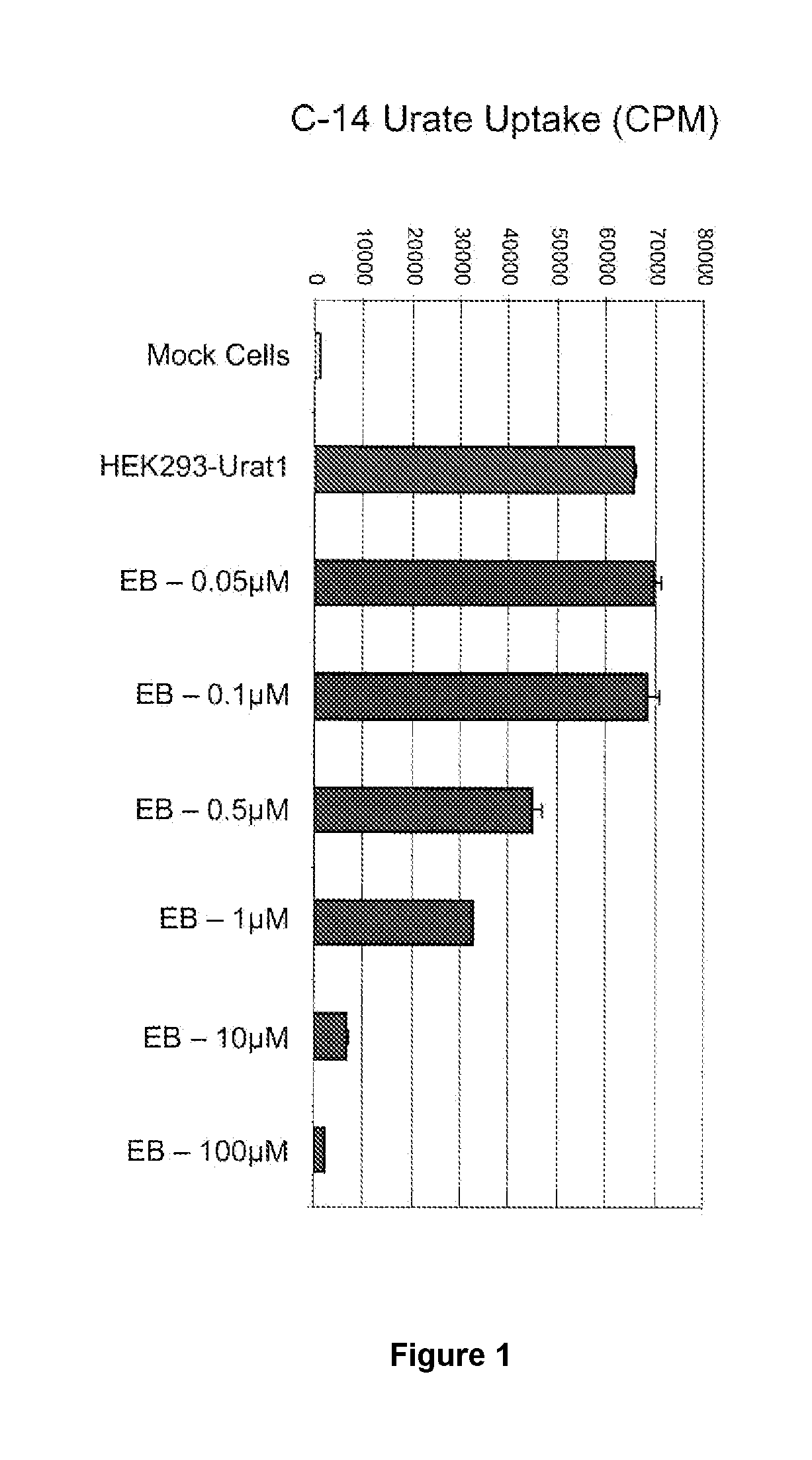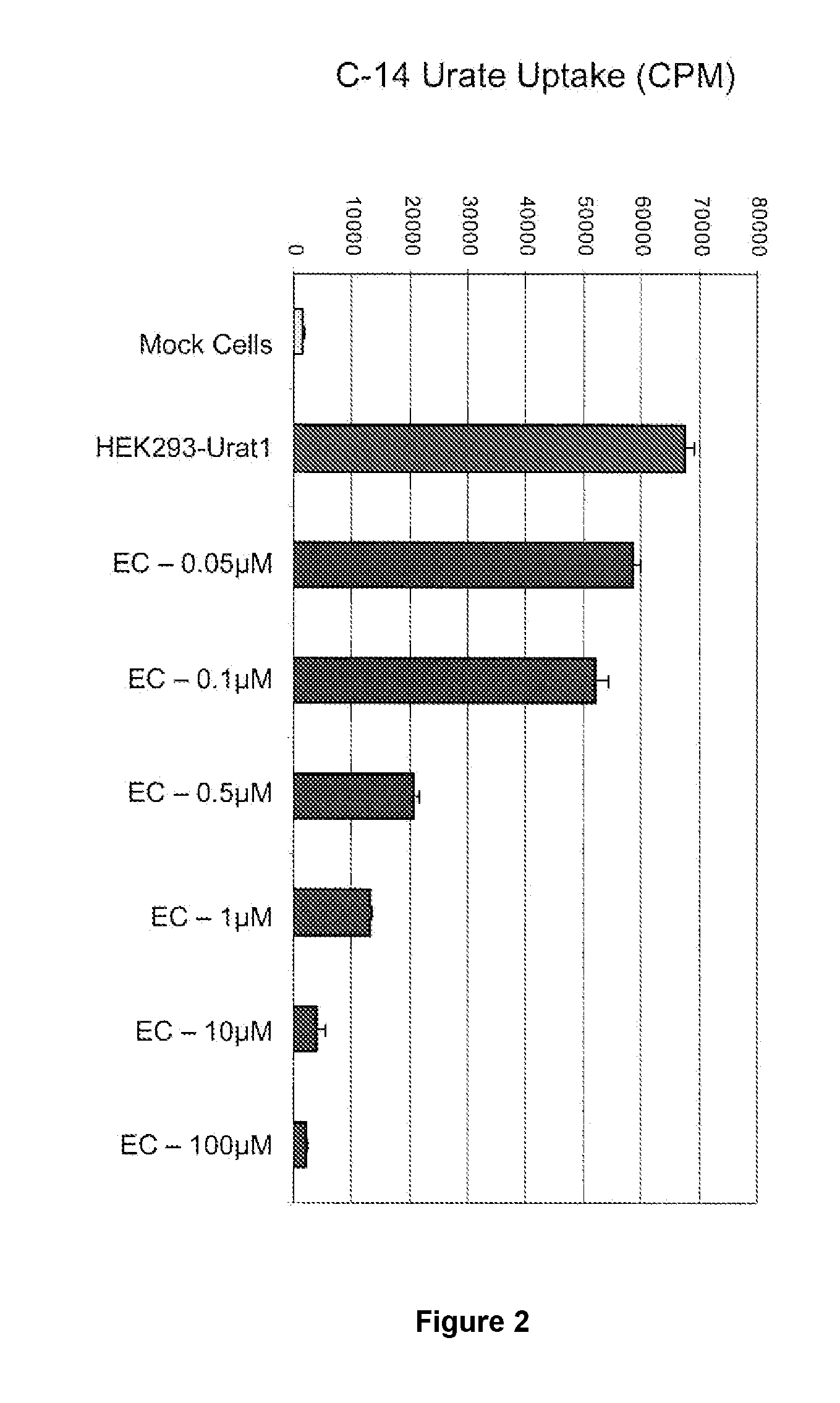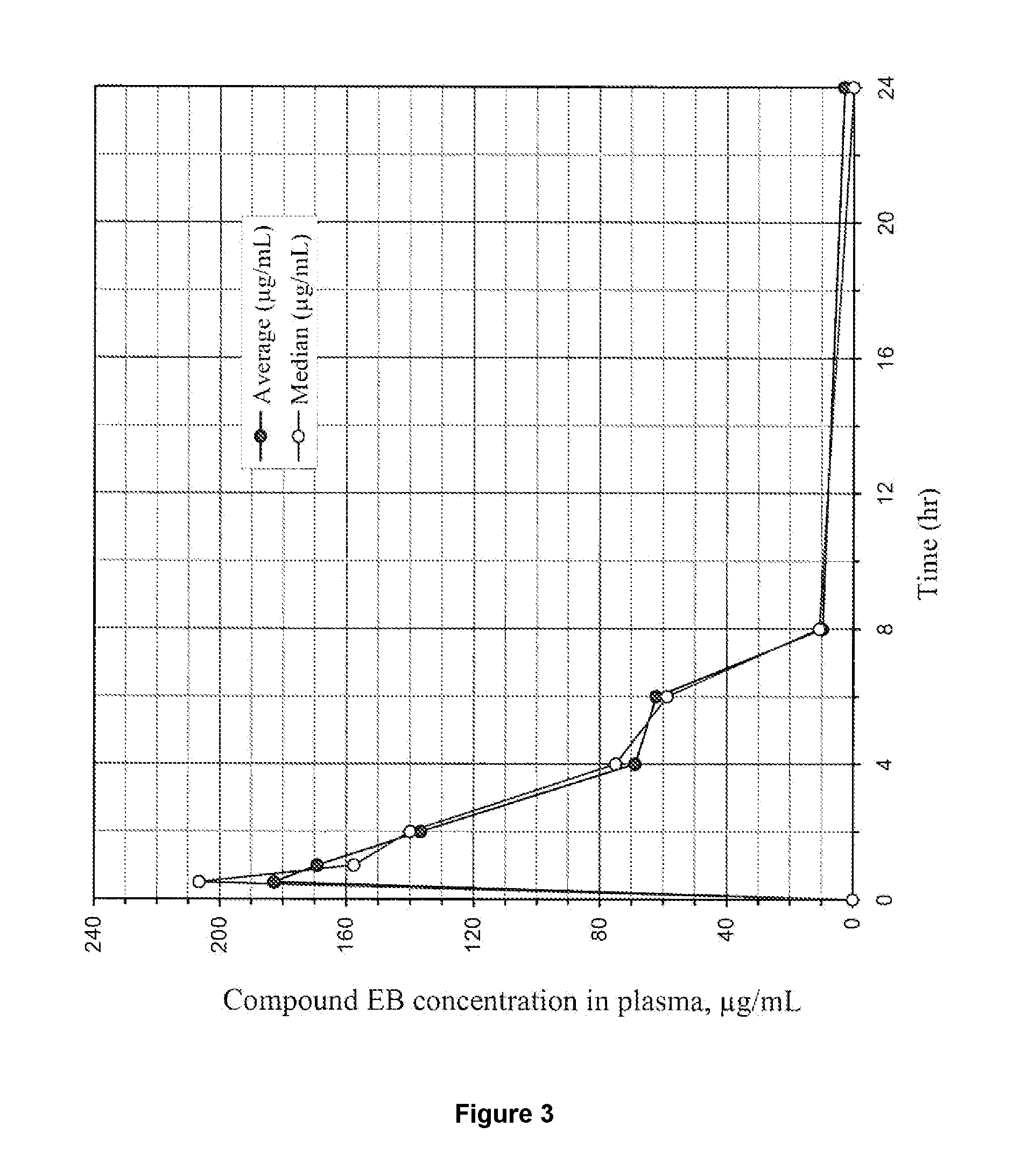Tetrazole compounds for reducing uric acid
- Summary
- Abstract
- Description
- Claims
- Application Information
AI Technical Summary
Benefits of technology
Problems solved by technology
Method used
Image
Examples
example 1
[0199]
5-(3-(2,6-Dimethylbenzyloxy)phenyl)-1H-tetrazole
Step A: Preparation of 3-(2,6-Dimethylbenzyloxy)benzonitrile
[0200]A solution of 2,6-Dimethylbenzyl alcohol (6.27 g, 46.1 mmol) and diisopropyl azodicarboxylate (DIAD, 9.24 g, 45.7 mmol) in dry THF (30 ml) was added drop wise to a solution of 3-Hydroxybenzonitrile (5 g, 37 mmol) and triphenylphosphine (TPP, 11.99 g, 45.7 mmol) in THF (100 ml) at 0° C. The reaction mixture was warmed to room temperature for 4 hours or until all the starting material is consumed, diluted with ether and washed with water (2×). The organic layer was dried over Na2SO4, filtered, concentrated, and purified by flash chromatography on a silica gel column (hex:ethyl acetate 2:1) to give the title compound as a white solid.
Step B: Preparation of 5-(3-(2,6-Dimethylbenzyloxy)phenyl)-1H-tetrazole
[0201]A mixture of 3-(2,6-Dimethylbenzyloxy)benzonitrile (Step A, 3 g, 11.8 mmol), sodium azide (0.847 g, 13 mmol) and ammonium chloride (0.697 g, 13 mmol) in dry dime...
example 2
[0203]
5-(3-(2,6-Dimethylbenzyloxy)benzyl)-1H-tetrazole
Step A: Preparation of 2-(3-Hydroxyphenyl)acetonitrile
[0204]To a solution of 2-(3-Methoxyphenyl)acetonitrile (3.6 g, 25.4 mmol) in dry methylene chloride (20 ml) was added BBr3 (55 ml, 1M in CH2Cl2, 55 mmol) at −78° C. under argon atmosphere. The reaction mixture was warmed to ambient temperature for 48 hours, quenched by crushed ice, and extracted with methylene chloride. The organic layer was dried over Na2SO4, filtered, concentrated and purified by flash chromatography on a silica gel column (CH2Cl2:ethyl acetate 4:1) to give the title compound as oil.
Step B: Preparation of 2-(3-(2,6-Dimethylbenzyloxy)phenyl)acetonitrile
[0205]A solution of 2-(3-Hydroxyphenyl)acetonitrile (Step A, 5 g, 37 mmol) and diisopropyl azodicarboxylate (DIAD, 3.38 g, 16.7 mmol) in dry THF (20 ml) was added drop wise to a solution of 2,6-Dimethylbenzyl alcohol (2.25 g, 16.5 mmol) and triphenylphosphine (TPP, 4.3 g, 16.4 mmol) in THF (30 ml) at 0° C. unde...
example 3
[0208]
5-(3-(2,6-Dimethylbenzyloxy)-4-methoxybenzyl)-1H-tetrazole
Step A: Preparation of Ethyl 3-hydroxy-4-methoxybenzoate
[0209]A solution of 3-Hydroxy-4-methoxybenzoic acid (25 g, 148.67 mmol) and p-Toluenesulfonic acid monohydrate (3.17 g, 16.66 mmol) in abs ethanol (300 ml) was refluxed for 6 hours or until all the starting material is consumed. The reaction mixture Was concentrated, diluted with EtOAc (60 ml) and washed with water (20 ml). The organic layer was dried over Na2SO4, filtered, concentrated, and purified by flash chromatography on a silica gel column (hex:ethyl acetate 2:1) to give the title compound.
Step B: Preparation of Ethyl 3-(2,6-dimethylbenzyloxy)-4-methoxybenzoate
[0210]A solution of Ethyl 3-hydroxy-4-methoxy benzoate (Step A, 9.10 g, 46.4 mmol) and diisopropyl azodicarboxylate (DIAD, 10.23 g, 50 mmol) in dry THF (20 ml) was added drop wise to a solution of 2,6-Dimethylbenzyl alcohol (6.94 g, 51 mmol) and triphenylphosphine (TPP, 13.27 g, 50 mmol) in dry THF (60...
PUM
| Property | Measurement | Unit |
|---|---|---|
| Volume | aaaaa | aaaaa |
| Volume | aaaaa | aaaaa |
| Volume | aaaaa | aaaaa |
Abstract
Description
Claims
Application Information
 Login to View More
Login to View More - R&D
- Intellectual Property
- Life Sciences
- Materials
- Tech Scout
- Unparalleled Data Quality
- Higher Quality Content
- 60% Fewer Hallucinations
Browse by: Latest US Patents, China's latest patents, Technical Efficacy Thesaurus, Application Domain, Technology Topic, Popular Technical Reports.
© 2025 PatSnap. All rights reserved.Legal|Privacy policy|Modern Slavery Act Transparency Statement|Sitemap|About US| Contact US: help@patsnap.com



